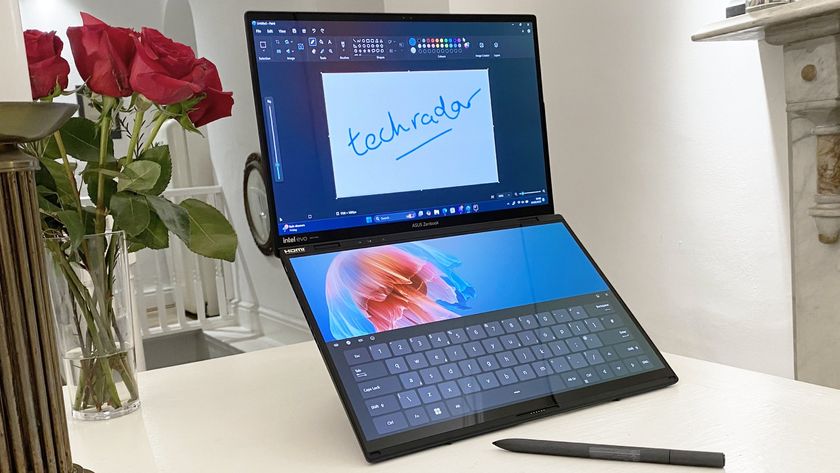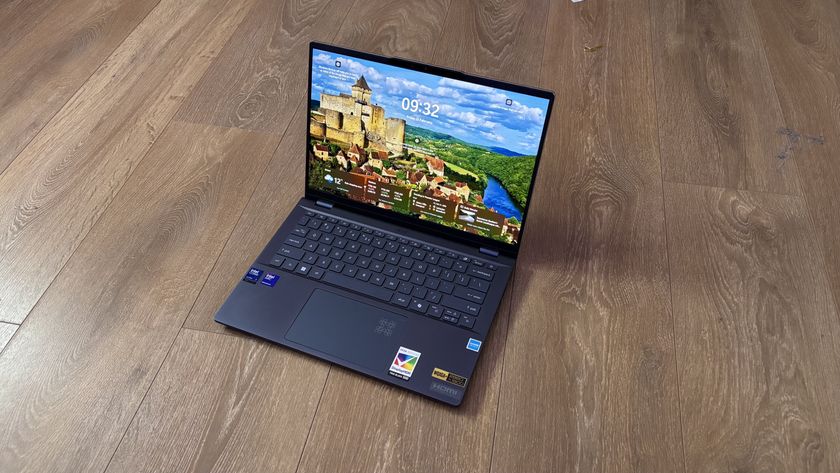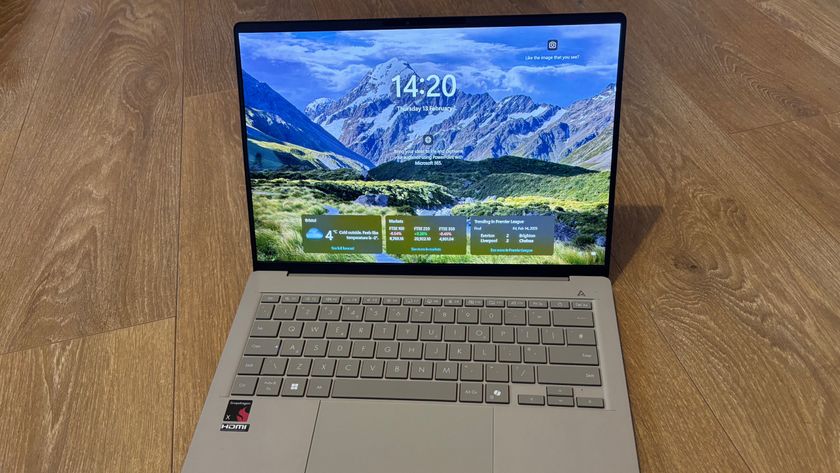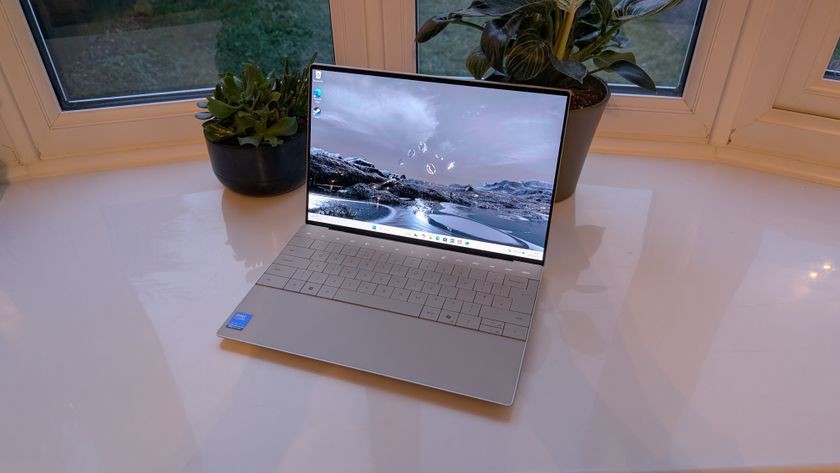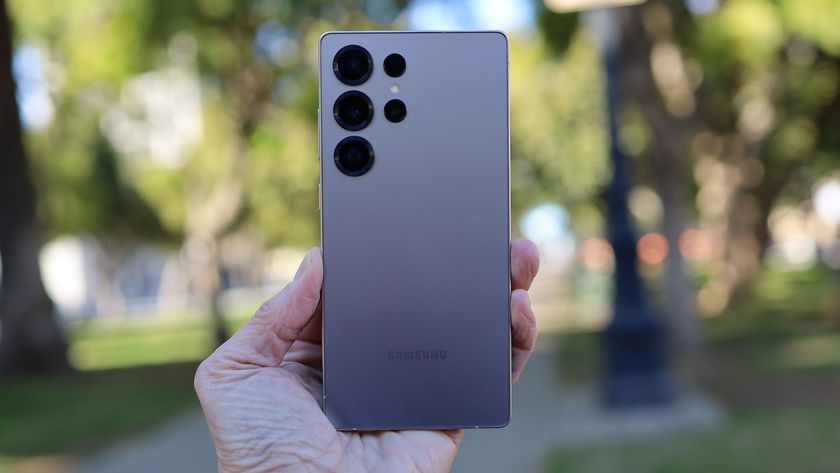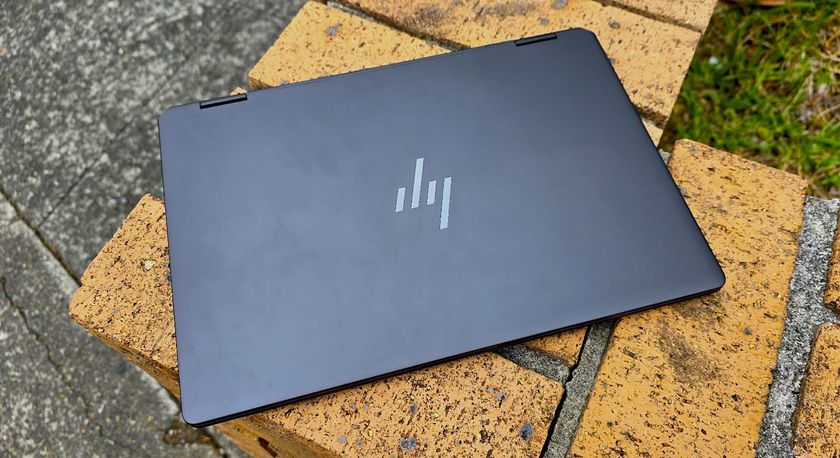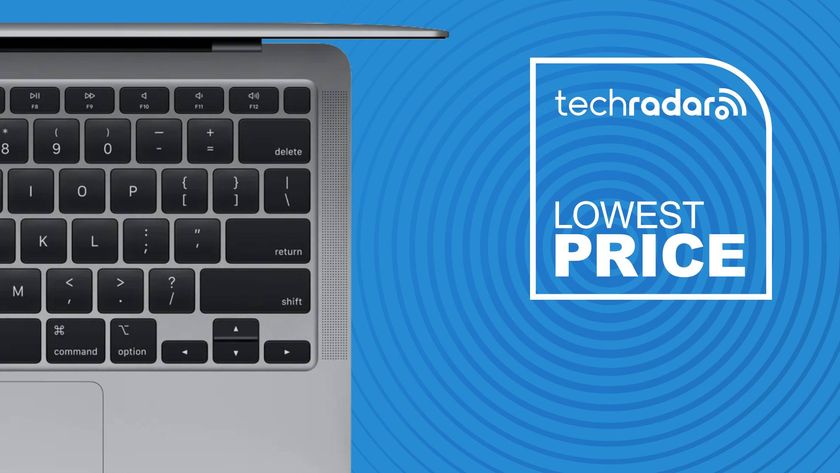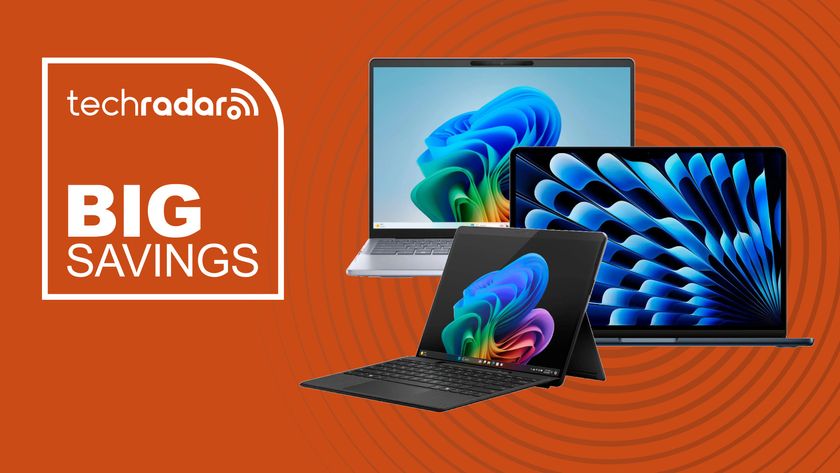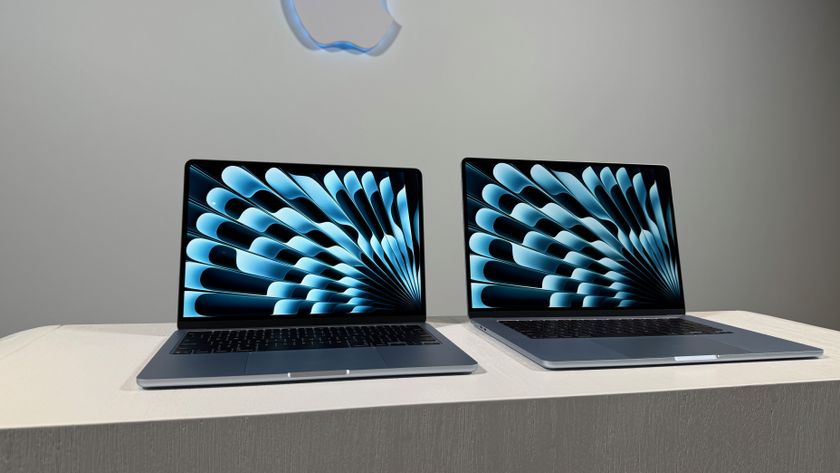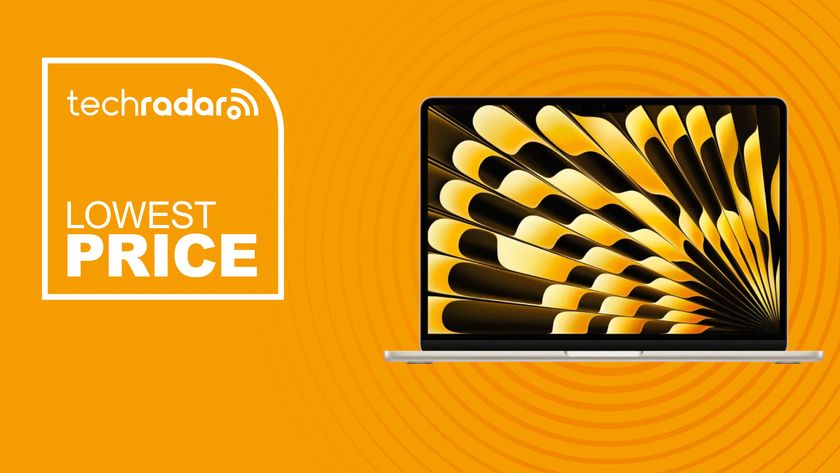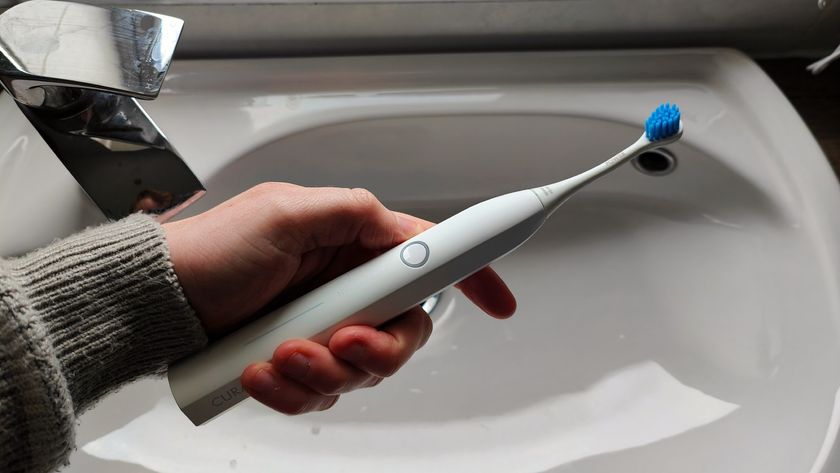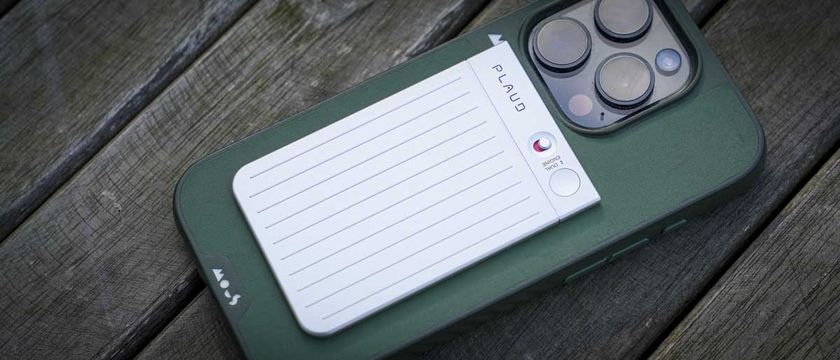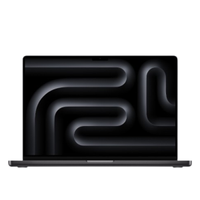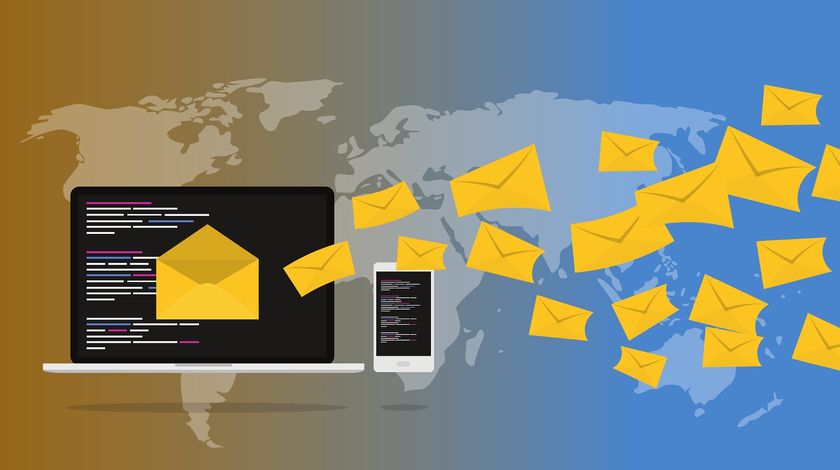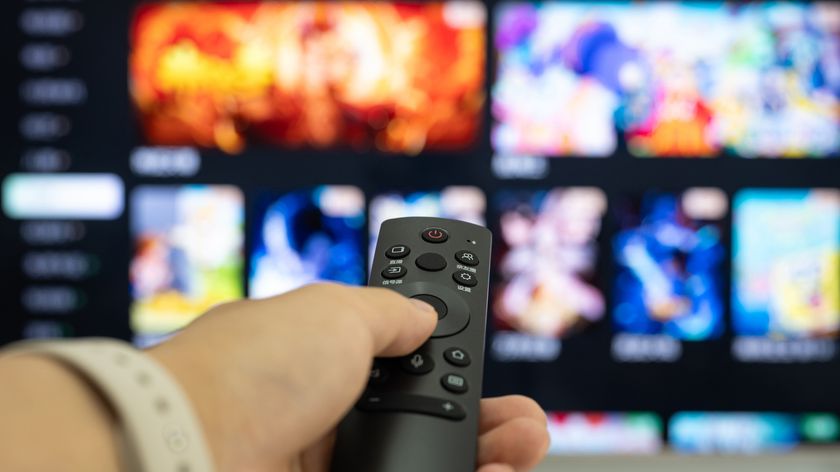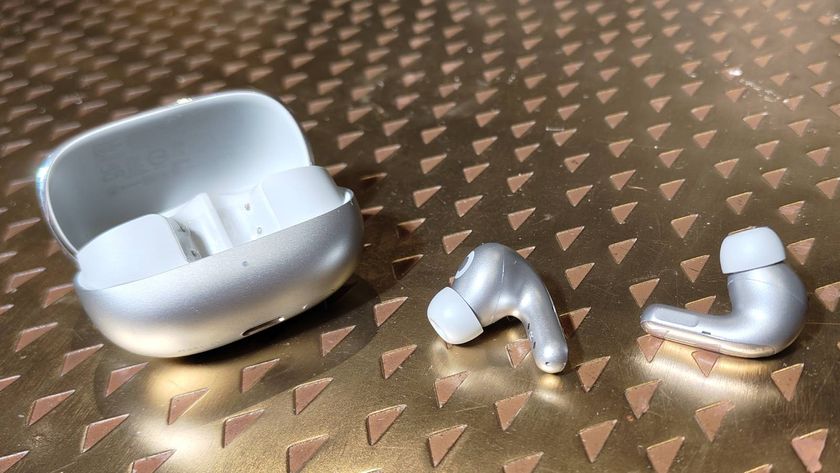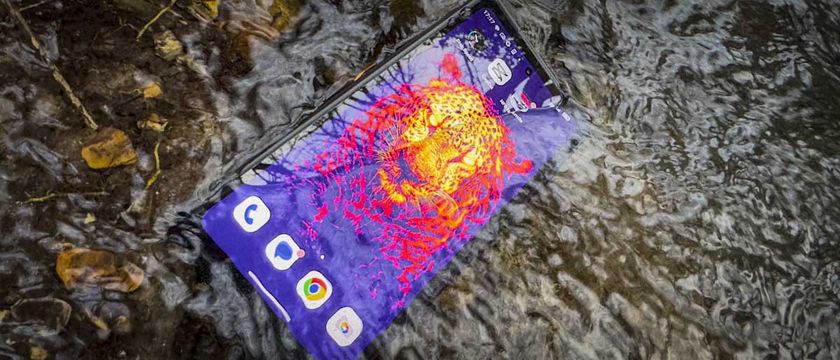TechRadar Verdict
Asus’s Vivobook S 15 is an absolutely phenomenal piece of kit. With an aesthetic that’d make even the Milano fashion houses jealous, it combines the latest and greatest Qualcomm Snapdragon processor, a beautiful OLED display, plus some serious hardware under the hood to deliver a phenomenal laptop experience with outstanding battery life for day-to-day usage. It’s not perfect, however: AI is the word, certainly when it comes to the marketing on this thing, and sadly although Copilot remains a suitable LLM assistant, many of the other features still feel heavily in beta, sometimes sluggish at best. All of those key headline features have potential, but right now, it detracts from an otherwise outstanding product.
Pros
- +
Otherworldly design and aesthetic
- +
Impressive display
- +
Best-in-class audio performance
- +
Battery life is exceptional
Cons
- -
AI software still needs significant work
- -
Gaming performance is lacking
Why you can trust TechRadar
Asus Vivobook S 15 Copilot+: Two-minute review
The new Copilot+ PC edition of the Asus Vivobook S 15 is an absolutely exceptional piece of kit. The overall aesthetic and design style is extraordinary. It’s clean and crisp, with a beautiful metal finish complete with exceptionally subtle Asus branding. This is a professional device at its core, and it really does show.
Open up the Vivobook and you’re greeted with an outstanding OLED display, with sharp vibrant colors, and a snappy 2880x1620 resolution, all hurtling along at 120 Hz. That’d be good enough, but Asus has color-calibrated this thing as well, so the contrast and vibrancy are stunning. Combine that with sound developed in conjunction with Harman/Kardon (which is honestly some of the best audio I’ve heard coming out of a laptop ever), and the Vivobook S 15 is lining itself up to be an absolute winner.
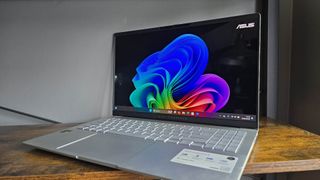
For hardware, the most interesting element is the Qualcomm Snapdragon X Elite processor. It’s an Arm-based system-on-a-chip (SoC) similar to Apple’s M3 line of chips found in the MacBook Air, and features an incredibly low 45W power draw. That’s been paired with 16GB of 8,440 MHz DDR5 memory (a phenomenally high speed even given current desktop PC standards), and a solid 1TB of PCIe 4.0 storage. Combine all of that with a bevy of connectivity options, plus a relatively affordable price tag, and all of a sudden you’re looking at one of the best laptops out there for general day-to-day work.
It’s not flawless however, it still struggles in games with no dedicated GPU (although AI upscaling does help a ton here), and the general AI features are (right now at least) somewhat limited, with only Microsoft Copilot and Co-creator being the most fleshed out features of the lot.
Still, AI aside, the Vivobook S 15 is just an utterly almost flawless thing. As traditional laptops go, it’s outstanding, easily competing with the likes of Dell’s XPS line, and far above and beyond the likes of Huawei’s MateBook D16. For the price you’re paying, there’s little not to love.
Asus Vivobook S 15 Copilot+: Price and availability
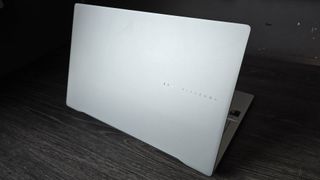
- How much does it cost? $1,299.99 / £1,299.99 / AU$2,699
- When is it out? Available now
- Where can you get it? Available now in the US, UK and Australia
When it comes to the price, the Asus Vivobook S 15 is impressively affordable for what you’re getting. Rolling in at $1,299.99 (£1,299.99 / AU$2,699), it packs in some serious hardware for that cash. There's also a variant with the slightly less powerful Snapdragon X Plus chip for $1,099.99 in the US, although the availability of that model in other regions is unclear at the time of writing.
Not only do you get a decent processor for day-to-day work and streaming, plus 16GB of ridiculously high spec memory, and a TB of PCIe 4.0 storage, but it also features one hell of an OLED display, with a 3K resolution, 120 Hz refresh rate, and enough color accuracy (and vibrancy) to keep even the most eagle-eyed of graphic designer happy.
This is one of the first Snapdragon X laptops out there, and as such it is a little unproven mind you. It does lag behind in more traditional PC benchmarks, such as GeekBench and CineBench, but for general office work, web browsing, and daily activities it’s far more than capable. Just don’t expect a super seamless experience all the time.
There are very few laptops out there, that pack in so much hardware for such little outlay. There’s AI capacity here too, of course, being one of the main selling points of the S 15 (more on that in a bit), but even without it, the S 15 is absolutely outstanding.
- Value: 4.5 / 5
Asus Vivobook S 15 Copilot+: Specs
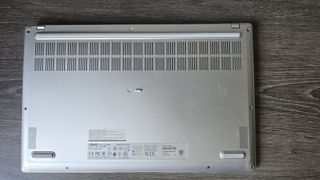
The Asus Vivobook S 15 Copilot+ comes in one main configuration with the 12-core Qualcomm Snapdragon X Elite chip, although a model featuring the 10-core Snapdragon X Plus SoC is also available for a slightly lower price in some regions.
| Header Cell - Column 0 | Review Configuration |
|---|---|
| CPU | Snapdragon X Elite X1E78100 |
| GPU | Qualcomm Adreno 3.8 |
| RAM | 16GB LPDDR5X-8440 |
| Display | 15.6-inch 2880x1620, OLED, 600 nits, 120 Hz |
| Storage | 1TB PCIe 4.0 SSD |
| Ports | 2x USB 3.2 Gen 1 Type-A, 2x USB 4.0 Gen 3 Type-C, 1x HDMI 2.1, 1x 3.5mm combo audio jack, Micro SD card reader |
| Wireless | Wi-Fi 7, Bluetooth 5.4 |
| Weight | 3.13lbs / 1.42kg |
| Dimensions | 355.4 x 250.4 x 16.5mm |
Asus Vivobook S 15 Copilot+: Design and Features

- Outstanding Screen
- Material choice is stunning
- Broad range of ports
As you’ve likely guessed by this point, the Asus Vivobook S 15 is an absolutely beautiful professional laptop or workbook. The satin metallic gray chassis is crisp and sharp, with nice smooth rounded edges. The Asus branding, what little there is, is a simple sans serif typeface, either just below the screen or engraved gracefully into the rear lid. The bezel on the screen is slim and almost nonexistent. Similarly, the keyboard, which is chiclet by design, provides a sublime typing experience, and the trackpad likewise does its job admirably too.
The I/O certainly isn’t lacking either. For your money, you get two USB 4 Type-C ports, two USB 3.2 Type-A ports, a Micro-SD card reader, a 3.5mm combo audio jack, and an HDMI out as well. It also comes with a fairly admirably built-in microphone, along with a decent built-in FHD webcam as well.
In general, it’s actually just a very well-built laptop. There’s no gimmicky folding display, or 2-in-1 design here for you to get used to, no touch-screen capability, or pens, just a simple, clean design. If it isn’t broke, don’t fix it, seems to be the motto.

Under the hood, you of course get that Arm-based Snapdragon processor. This is the X Elite X1E 78 100 chip (catchy), running at 3.4 GHz, and it features 12 cores, no hyperthreading, and a 42 MB cache as standard. Asus touts that this thing has a total AI processing power of around 75 TOPs to help with the on-board AI capabilities the Vivobook S 15 has, that’s paired with a dedicated “Neural Processor” as well (Qualcomm’s Hexagon NPU) which adds an additional 45 TOPs to the equation.
That’s been paired with 16GB of LPDDR5X memory rated at a whopping 8,440 MT/s. That’s ridiculously quick, even by some of the best desktop PC standards, and quite a curious addition, that suggests that both AI tasks and these Snapdragon chips really do benefit from high-frequency memory, perhaps even more so than the likes of AMD and its Ryzen processors (which generally benefit from higher frequency kits thanks to their Infinity Fabric interconnect being tied to the memory speed). The only minor downside here is that the Vivobook S 15 has soldered LPDDR5X, and there are no alternative models either, so 16GB is your lot sadly.

Because at its heart, the Snapdragon is an Arm-based chip, running off a different architecture compared to traditional processors found from AMD and Intel (which typically operate on an x64 architecture design), support is a bit mixed when it comes to general application use. That generally means you are going to find a lot of programs listing the CPU as “emulated”, Windows is effectively forcing the Arm processor to emulate and behave as a traditional x64 chip in certain programs, to ensure they operate correctly. That will have a minor detrimental effect on overall performance, but it shouldn’t be that noticeable if I’m honest. Arm and Asus clearly learned from the troubles Apple encountered with its first M1 processors, and compatibility is far greater now than it was back then for Arm-based processors because of it.
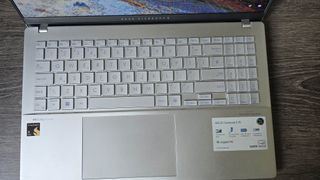
As for the less volatile storage, Asus has popped in a 1TB PCIe 4.0 SSD, and it does a pretty good job when it comes to sequential transfers, although more on that in a bit.
- Design: 4.5 / 5
Asus Vivobook S 15 Copilot+: Performance
- For day-to-day usage, this is flawless
- Priced just right for what you’re getting
- Gaming is still nowhere near a dedicated GPU
The Vivobook S 15 might have a bit of an oddity when it comes to its processor, but it still holds its own with some of the best out there to date. In general day-to-day use, the S 15 was cool and quiet, zipping along nicely. A particularly enjoyable experience with that screen. Cooling was handled well, and noise was minimal, one of the big benefits of the super-efficient Arm chips.
In benchmarks however, it is admittedly a bit of a different story, compared to something like Huawei’s MateBook D 16 (admittedly not available US side) with its Intel Core i9-13900H, the Vivobook did struggle in certain benchmarks, although perhaps not by as much as you’d think. GeekBench 6.2.1 provided the most intriguing results of the bunch, with the Snapdragon X landing a score of 2,444 in single core, and 9,008 in the multi-core test. Compare that to the i9-13900H, which scored 2,605 in single-core and 12,568 and you start to get a picture of just how close Arm is getting in terms of performance, particularly given it's often running an emulated version of the program on top of that.
Here's how the Asus Vivobook S 15 Copilot+ performed in our suite of benchmark tests:
Geekbench 6:
Single - 2,444
Multi - 9,088
3DMark:
WildLife Extreme: 6,091
Solar Bay: 9,933
CrossMark:
Overall - 1,181
Productivity - 1,050
Creativity - 1,377
Responsiveness - 1,062
1080p movie playback battery life: 14 hours 18 minutes
CrystalDiskMark 8:
Read: 5,024MB/s
Write: 3,623MB/s
That multi-core difference does give Intel the edge there of course, by a healthy 28%, but you’ve got to bear in mind that it’s scoring that with 20 total threads, compared to the Snapdragon’s 12. All while consuming more power, operating at 5.4 GHz, and running at hotter temps as a result. The gap is starting to close between Arm and x64 and that’s incredibly exciting.
Graphically however Intel still has the edge, with its Iris Xe graphics performing considerably better in our benchmark results. 3D Mark Wildlife Extreme for example scored just 6,091 with the Snapdragon and its Qualcomm Adreno chip, versus a staggering 13,731 with Intel. Similarly, in games at their native resolutions, Total War Warhammer 3 on Low scored 33.9 fps on Intel’s chip, versus just 13.7 on the Adreno.
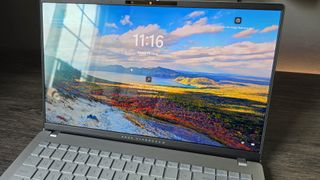
But there’s a catch here, and that’s the AI upscaling tech that’s built natively into the Vivobook S 15. You can actually drop the resolution scaling to 50% in Total War Warhammer 3, let the notebook do its thing (it’s automatically applied to all titles), set the graphical profile to Ultra, and watch the game run at 20fps instead. Sure, that’s not playable for this kind of title, but that’s a significant improvement particularly given you’re now running the game on Ultra and not the lowest profile. Although admittedly it still doesn’t look the best, and needs significant antialiasing improvements, it’s a start.
Traditional performance aside, this is after all one of the first Copilot+ AI laptops out there, and there’s a lot to report here too. Copilot generally is very similar to any other LLM you may have used, such as Google Bard or Chat GPT. There’s a button on the keyboard to open it up, or you can click next to the Start Menu, and open up a window to chat. It’s limited to a number of queries per 24 hours, unless you sign in, and behaves like pretty much every other LLM. It doesn’t have access to your system directly, so can only suggest what you can do.
Live captioning is also heavily touted on the product page. It’s meant to be able to give you captions on any content (regardless of web browser or media format), and live translate from one language to another. I found it was generally very laggy and slow to use, even in English-to-English. Live translation was also much worse, with Japanese or Norwegian, often missing out entire sentences, or translated sentences appearing five to ten seconds after the content had occurred. It also struggled with accents and regional dialects, particularly with variants of British English. Recall (where Windows can find a file based on a description) is also not currently implemented and is “coming soon” in a Windows side update.
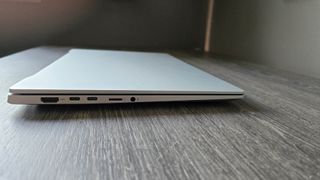
Moving away from the software side, when it came to the Display, and particularly the audio, the experience was outstanding. That screen is absolutely gorgeous, with a 15.6-inch OLED panel at 2880 x 1620, you get a 211.82 PPI density, and the colors are just phenomenal. Combine that with a buttery smooth 120 Hz refresh rate, along with adaptive sync as well as a color-calibrated profile from Asus and it’s just dreamy.
Likewise, the audio experience is exceptional too. Asus has worked with Dolby Atmos and Harman/Kardon on the built-in speakers, and they’re some of the best I’ve heard on a laptop at this price. Trebles are crystal clear, there’s plenty of mid, and a relatively well-rounded bass as well. You’re still going to get better results from some of the best headphones out there of course, or a decent speaker system, mixed with a decent subwoofer - but for a laptop? Nah, this is shockingly good.
- Performance: 4 / 5
Asus Vivobook S 15 Copilot+: Battery life
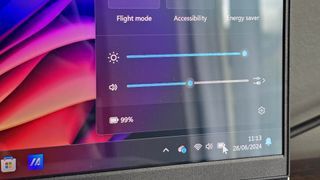
- Can last for multiple days of work and holds charge well
- Bundled fast-charger
Asus rates the Vivobook S 15 at 70WHrs for its battery capacity, and it comes with a fast-charging 90W AC USB Type C adapter as well. It reckons you should be able to get around 18 hours of total battery life in general day-to-day use. In my testing, it landed around the 17-hour mark or so, more than enough for several days of office work and presentations without charge.
That figure did dip a bit when I was watching content on YouTube and in video calls, but otherwise, the Vivobook S 15 fell exactly where I expected it to in that regard. There was never a moment where I was particularly concerned r.e. the battery life on this thing that’s for certain.
- Battery life: 4.5 / 5
Should you buy the Asus Vivobook S 15 Copilot+?
| Attributes | Notes | Score |
|---|---|---|
| Value | Asus’s Vivobook S 15 is exceptionally well priced for what you get. With OLED screen, Harman/Kardon audio, and some seriously epic hardware, it’s a solid pick. | 4.5 / 5 |
| Design | A beautiful satin metallic finish, subtle branding, and its awesome feature set would make even Italian fashion houses jealous of this thing. | 4.5 / 5 |
| Performance | It might not be that great at gaming, and the AI needs some work, but it dominates every other performance metric. Arm is terrifying and it’s coming for x64 that’s for sure. | 4 / 5 |
| Battery Life | With an 18-hour rated battery life, our testing saw the Vivobook S 15 land at around 17 hours or so under standard load, making it one of the most efficient laptops out there. | 4.5 / 5 |
| Total | The Vivobook S 15 copilot is a phenomenal laptop. At this price you get an outstanding package you’ll be more than happy with for office or at home. Hopefully, the AI feature set will improve in the coming months. | 4.5 / 5 |
Buy it if...
You’re on the hunt for an exceptionally priced laptop for work
With that price, and the spec you get, AI features or not, the Vivobook S 15 is a stunning notebook perfect for any professional looking for a solid value proposition.
You want to enjoy entertainment on the side
With an outstanding screen and phenomenal audio, the Vivobook S 15 ranks as one of the best laptops out there for enjoying Netflix, YouTube, or any other streaming service.
Don't buy it if...
You’re big into gaming
Regardless of the AI upscaling tech in here, gaming is still absolutely the domain of the dedicated GPU. You’d be better off with a gaming notebook instead.
You’re not keen on being an AI early adopter
The AI features here are still in the early stages of development. A lot of features are either half-baked or just outright missing.
Asus Vivobook S 15 Copilot+: Also Consider
Apple MacBook Pro 16-inch
The MacBook Pro delivers exceptional performance, both in-game and out, along with outstanding build quality, all at a price.
Read our full Apple MacBook Pro 16 review
Dell XPS 14 9440
The king of professional Windows laptops, the XPS 14 features an awesome 3.2K OLED display, plus some awesome hardware to back it all up.
Read our full Dell XPS 14 9440 review
How I tested the Asus Vivobook S 15 Copilot+
As usual with laptop reviews, I replaced my daily driver with the Asus Vivobook S 15 for a week, testing out all my usual work duties including web browsing, word processing, and answering emails. I also used it for a bit of leisure time too - watching Netflix and YouTube, and trying my best to play some games (though it struggled a little in that area).
I've been reviewing computers of all sorts for years, and I've used a wide variety of laptops for my own work throughout that time. To see Qualcomm push ahead with its own Arm-based chips in such a successful way is the real game-changer here - no matter what Microsoft might tell you about AI. Arm is here to stay, folks.
- First reviewed July 2024

Zak is one of TechRadar's multi-faceted freelance tech journalists. He's written for an absolute plethora of tech publications over the years and has worked for Techradar on and off since 2015. Most famously, Zak led Maximum PC as its Editor-in-Chief from 2020 through to the end of 2021, having worked his way up from Staff Writer. Zak currently writes for Maximum PC, TechRadar, PCGamesN, and Trusted Reviews. He also had a stint working as Corsair's Public Relations Specialist in the UK, which has given him a particularly good insight into the inner workings of larger companies in the industry. He left in 2023, coming back to journalism once more. When he's not building PCs, reviewing hardware, or gaming, you can often find Zak working at his local coffee shop as First Barista, or out in the Wye Valley shooting American Flat Bows.
